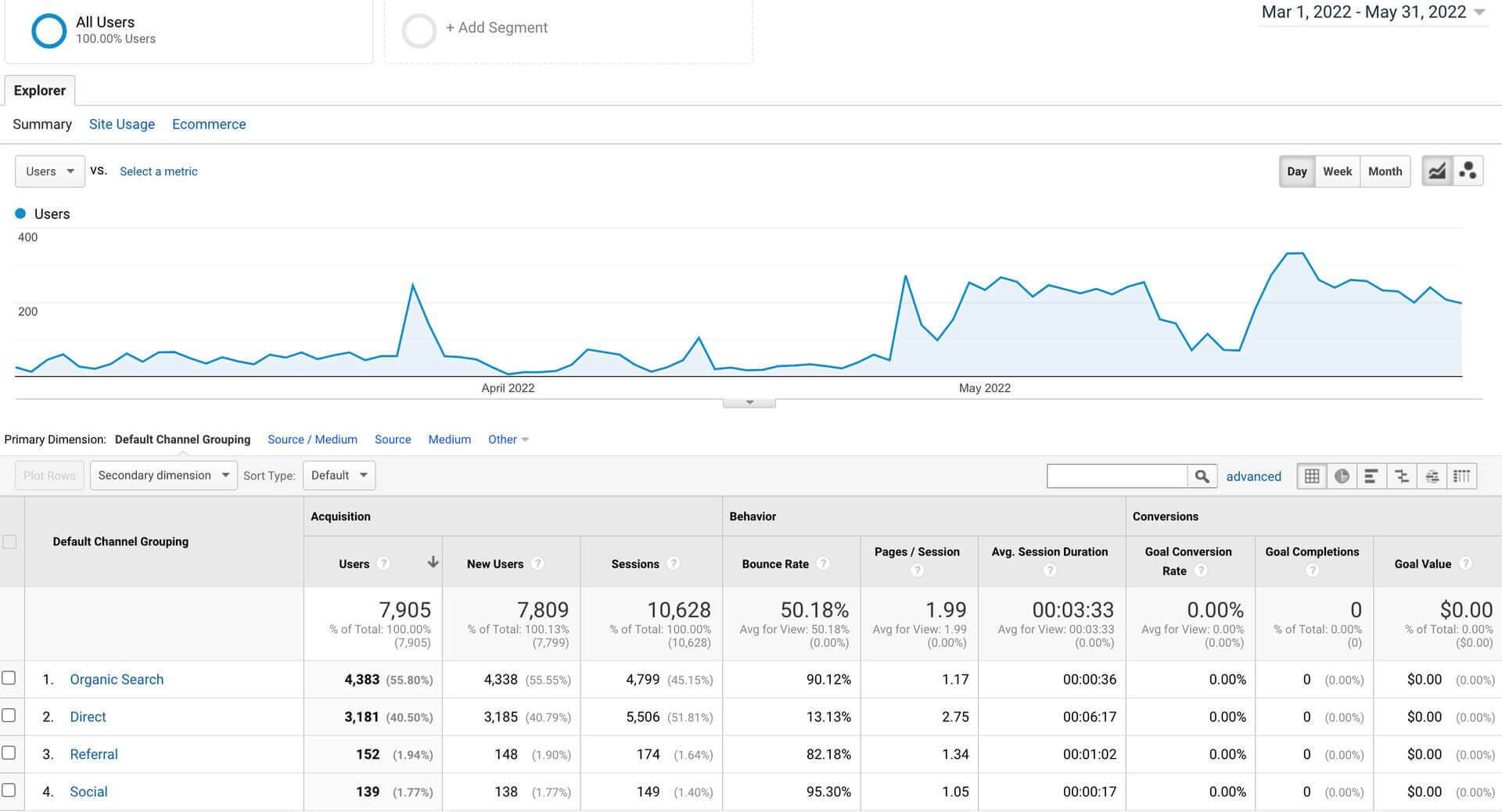When it comes to writing, it’s crucial to keep your audience in mind. Understanding what your readers want, their needs, and their desires can significantly impact the success of your writing. By tailoring your content to meet their expectations, you can create a more engaging and impactful piece. In this blog section, we will explore the importance of understanding your audience’s needs and desires and how it can benefit your writing.
When it comes to writing, understanding your audience’s needs and desires is crucial for success. By tailoring your content to meet their expectations, you can create more engaging and impactful pieces.
Here are six key takeaways:
- Relevance: Writing with your audience in mind makes your content more relevant to their interests and concerns, ensuring they find value in it.
- Engagement: Addressing the desires and interests of your readers captivates their attention and keeps them engaged throughout your piece.
- Trust and loyalty: By catering to your audience’s needs, you build trust and loyalty, leading to long-term relationships and repeat readership.
- Improved communication: Understanding your audience’s needs allows you to communicate your message more effectively by addressing their concerns and speaking their language.
- Stand out from the competition: Catering to your audience’s needs helps your writing stand out in a saturated online landscape, attracting readers to choose your content over others.
- Thorough research: Conducting thorough research, collecting data, and engaging with your readers through surveys or feedback forms enables you to understand your audience’s needs and desires better.
By applying these takeaways to your writing, you can create content that resonates with your audience, drives engagement, and builds trust and loyalty.
Why Meeting the Needs and Desires of Your Audience Matters
Meeting the needs and desires of your audience is essential because it helps you establish a connection with them. When readers feel that a piece of writing speaks directly to them, they are more likely to engage with it, share it, and keep coming back for more. By understanding your audience’s needs, you can address their pain points, answer their questions, and provide valuable information that resonates with them.
Here’s why catering to your audience’s needs and desires is crucial:
- Relevance: When you write with your audience in mind, your content becomes more relevant to their specific interests and concerns. This relevance ensures that readers find value in your writing and see it as a valuable resource.
- Engagement: By addressing the desires and interests of your readers, you can captivate their attention and keep them engaged throughout your piece. Engaged readers are more likely to read until the end, share your content, and leave comments or feedback.
- Trust and loyalty: When readers feel that your writing understands and caters to their needs, they develop a sense of trust and loyalty towards you as a writer. This trust can lead to long-term relationships, repeat readership, and even conversions.
- Improved communication: Understanding your audience’s needs allows you to communicate your message more effectively. By speaking their language, addressing their concerns, and anticipating their questions, you can convey your ideas clearly and concisely.
- Stand out from the competition: In a saturated online landscape, catering to your audience’s needs can help your writing stand out from the competition. By offering unique insights, valuable information, and an authentic voice, readers are more likely to choose your content over others.
To truly understand your audience’s needs and desires, it’s essential to conduct thorough research. Collect data, engage with your readers through surveys or feedback forms, and analyze the metrics of your previous content to gain insights into what resonates with them.
In conclusion, meeting the needs and desires of your audience is crucial for successful writing. By understanding what your readers want, you can create content that resonates with them, engages them, and builds trust and loyalty. Remember, the more you cater to your audience’s needs, the more powerful and effective your writing becomes.

Identifying Your Audience
Understanding your audience’s needs and desires is crucial in creating engaging and impactful content. By identifying your target readers, you can tailor your message to resonate with them and provide them with the information they are seeking. Here are a few methods to help you determine who your audience is:
Creating Personas: How to Define Your Target Readers
Creating personas allows you to develop a deeper understanding of your target audience. Personas are fictional representations of your ideal readers, based on demographic and psychographic information. To create personas, consider the following details:
- Age
- Gender
- Location
- Education level
- Interests and hobbies
- Challenges and pain points
By building personas, you can gain insights into the characteristics and preferences of your audience, enabling you to craft content that will resonate with them.
Researching Audience Demographics and Psychographics
Analyzing audience demographics and psychographics is another effective method to understand your readers. Demographic data includes age, gender, location, and income level, while psychographic data delves into their values, attitudes, and lifestyles. Here are a few strategies to gather this information:
- Utilize tools like Google Analytics, Facebook Insights, or LinkedIn Analytics to gather basic demographic data on your website visitors or social media followers.
- Conduct surveys or interviews with your audience to gain qualitative insights into their needs and preferences.
- Monitor social media platforms and online communities where your target audience interacts to understand their interests, discussions, and pain points.
By combining demographic and psychographic data, you can create a comprehensive profile of your audience, enabling you to tailor your content to their specific needs and desires.
Through careful research and analysis, you can gain a deeper understanding of what your audience wants and needs. This knowledge will empower you to create compelling content that resonates with them, ultimately driving engagement and fostering a loyal readership.
Conducting Audience Surveys
Understanding your audience is essential for creating content that resonates with them. To uncover your readers’ needs and desires, conducting audience surveys can be a powerful tool. Surveys allow you to directly gather feedback and insights from your audience, helping you tailor your content to their preferences.
The Power of Direct Feedback: Asking Your Readers What They Want
Asking your readers directly for feedback is one of the easiest and most effective ways to understand their needs and desires. By utilizing surveys or questionnaires, you can collect valuable data on their preferences, challenges, and expectations. Tools like SurveyMonkey, Google Forms, or Typeform can help you create and distribute surveys, whether it’s on your website, blog, or social media platforms.
Consider offering incentives or rewards for participation to encourage more responses. This direct feedback can give you valuable insights into your audience’s interests and guide your content creation process.

Using Surveys and Questionnaires to Gain Insight into Audience Needs
Surveys and questionnaires are great tools for collecting data about your audience’s demographics, interests, and pain points. By asking clear and relevant questions, you can uncover important information that helps you understand what your audience wants to see more of.
Analyzing the data collected from surveys can provide you with valuable insights into your audience’s needs and desires. Tools like Google Analytics, Facebook Insights, or Twitter Analytics can also help you track and measure how your audience engages with your content. By segmenting your audience based on factors like location, device, behavior, and interests, you can further tailor your content to their preferences.
Understanding your audience’s needs and desires is crucial for creating content that keeps them engaged and satisfied. By utilizing surveys and questionnaires, you can gather direct feedback and valuable insights to guide your content creation process and ensure it resonates with your audience.
With the power of audience research and understanding, you can create content that connects deeply with your readers and fulfills their needs and desires.
Analyzing Website Analytics
To create content that resonates with your audience, it’s essential to understand their needs and desires. One of the most effective ways to gain insights into your audience is by analyzing website analytics. By leveraging data on how your audience interacts with your content, you can better tailor your content to meet their preferences and expectations.

Leveraging Data: Understanding How Your Audience Interacts with Your Content
Website analytics tools like Google Analytics, Facebook Insights, and Twitter Analytics provide valuable data on various metrics that can help you understand your audience better. Some of the key metrics to look at include:
- Pageviews: This metric shows how many times a particular page on your website was visited. It gives you a basic understanding of how well your content performs compared to other publications.
- Users: The number of unique users who visited your website during a specific period. This metric helps you determine the scope of your audience and evaluate the effectiveness of your marketing efforts.
- Average Time on Page: Indicates whether visitors are attentively reading your content or just skimming it. This metric can help you identify engaging website pages and guide your content strategy.
Identifying Popular Topics and Content Formats Based on Metrics
Analyzing website analytics allows you to identify popular topics and content formats that resonate with your audience. By looking at metrics like pageviews, bounce rate, and average time on page, you can gauge which topics attract your audience the most and tailor your content accordingly.
Analyzing website analytics helps you understand your audience’s preferences, interests, and behaviors. It provides valuable insights into their needs and desires, allowing you to create content that truly resonates with them. By leveraging data and adjusting your content strategy based on the metrics, you can deliver more personalized and engaging content that drives higher engagement and conversions.
Next, let’s explore some additional content metrics to track in 2023 to further understand your audience’s needs and desires.
Utilizing Social Media Monitoring
In order to truly understand and engage with your audience, it is crucial to utilize social media monitoring. This practice involves tracking and analyzing conversations and mentions of your brand on social media platforms. By actively monitoring these interactions, you can gain valuable insights into your audience’s interests, needs, and desires.
Harnessing Social Media Insights: Monitoring Your Audience’s Interests and Engagements
With social media monitoring, you can gain a deeper understanding of what matters most to your audience. By tracking keywords, mentions, and conversations related to your brand, you can identify topics that resonate with your audience and tailor your content accordingly. This allows you to create content that is truly relevant and valuable to your target market.
Additionally, social media monitoring enables you to track engagement metrics such as likes, comments, and shares. This data can help you identify the types of content that generate the most interest and engagement among your audience. With these insights, you can refine your content strategy and deliver more of what your audience craves.
Gaining Inspiration from Trending Topics and Influencers
Monitoring trending topics and influencers in your industry can provide valuable inspiration for your content and marketing strategies. By keeping an eye on the latest trends and the influencers who are driving conversations, you can stay ahead of the curve and ensure that your brand remains relevant and engaging to your audience.
By leveraging social media monitoring tools, you can stay informed about the topics that are capturing the attention of your audience. This enables you to align your content and marketing efforts with the current interests and desires of your target market.
In conclusion, social media monitoring is a powerful tool that allows you to understand and connect with your audience on a deeper level. By harnessing the insights gained from monitoring your audience’s interests and engagements, as well as staying updated on trending topics and influencers, you can create content and strategies that truly resonate with your audience’s needs and desires.
Exploring Keyword Research
Understanding your audience’s needs and desires is essential when creating content that resonates with them. This starts with conducting thorough keyword research to identify the words and phrases they use when searching for information online. Keyword research allows you to uncover the specific language and terminology that your target audience uses, giving you insights into their interests, motivations, and pain points.
When conducting keyword research, it’s important to consider the search volume, competition, and relevance of the keywords to your content. Tools like keyword planners and analytics platforms can provide valuable data on the popularity and competitiveness of specific keywords.
By analyzing this data, you can prioritize keywords that have high search volume and low competition, increasing your chances of ranking higher in search engine results and attracting more organic traffic.
Creating Content that Aligns with Search Intent
Once you have identified the keywords that are relevant to your audience, it’s important to create content that aligns with their search intent. Search intent refers to the reason behind a user’s search query, and understanding it is crucial for creating content that meets their needs and desires.
There are four main types of search intent to consider: informational, navigational, commercial, and transactional.
- Informational search intent: Users with informational search intent are looking for knowledge or answers to their questions. Creating content that educates and provides valuable information can attract organic search traffic.
- Navigational search intent: Users with navigational search intent are looking for a specific website or page. Creating content that helps users find what they’re looking for on your site can improve user experience and increase your chances of ranking higher in search engine results.
- Commercial search intent: Users with commercial search intent are looking for a specific product or service. Creating content that highlights the benefits and features of your products or services can help persuade users to make a purchase.
- Transactional search intent: Users with transactional search intent are ready to convert. Creating content that includes clear call-to-actions and encourages users to take specific actions, such as buying a product or signing up for a service, can increase your chances of conversions.
By understanding the different types of search intent and creating content that aligns with them, you can better meet the needs and desires of your audience. This not only helps improve your search engine rankings but also boosts engagement, conversions, and overall customer satisfaction.
To further optimize your content for search intent, you can also consider the role of information architecture in aligning your content with user search intent. Organizing and structuring your website and content in a way that makes it easy for users to find what they’re looking for can improve user experience and increase your chances of ranking higher in search engine results.
In conclusion, by conducting thorough keyword research and creating content that aligns with your audience’s needs and desires, you can optimize your content for search intent and improve your chances of attracting organic search traffic, engaging your audience, and driving conversions. Understanding your audience and delivering content that matches their search intent is the key to success in content marketing.
Studying Competitors
When it comes to creating content that resonates with your audience, understanding their needs and desires is essential. One effective way to gain insights into what readers want is by studying your competitors. Analyzing their content can help you identify content gaps and opportunities for improvement in your own strategy.
Identifying Content Gaps and Opportunities for Improvement
By examining your competitors’ content, you can gain valuable insights into what is working well in your niche and what might be missing. Here are some key steps to follow when conducting competitor research:
- Use Tools: Utilize tools like BuzzSumo, Ahrefs, and Moz to analyze your competitors’ content. These tools can provide information on the topics, formats, and keywords your competitors are using, as well as their rankings and audience engagement.
- Assess Popular Content: Identify which of your competitors’ content pieces are popular and successful. Look for patterns in the topics and formats that resonate with your target audience. This will help you understand what topics are in demand and what content is currently missing or underperforming in your niche.
- Fill Content Gaps: Once you have identified content gaps, you can create content that addresses those specific needs or offers a unique perspective. Providing value and filling these gaps can help position you as an authority in your industry.
- Enhance Existing Content: Analyze what your competitors are doing well and find opportunities to improve upon it. This could involve enhancing the quality of your content, providing additional information and insights, or presenting the information in a more engaging way.
By studying your competitors and identifying content gaps and opportunities, you can better cater to your audience’s needs and desires. This will help you create content that captures their attention, delivers value, and drives more engagement on your website.
Engaging with Your Audience
To create content that resonates with your audience, it is crucial to understand their needs and desires. By engaging with your audience, you can gather valuable insights and tailor your content accordingly. Here are some strategies to help you effectively engage with your audience.
Utilizing Comments, Shares, and Other Interaction Metrics
One way to gauge your audience’s interests is by analyzing the interaction metrics of your content. Engagement metrics, such as comments, shares, likes, and views, can provide valuable insights into how well your content is resonating with your audience.
By encouraging your audience to leave comments and share your content, you create opportunities for direct interaction and feedback. This enables you to understand their needs and preferences better and adjust your content strategy accordingly.
Additionally, tracking metrics like time spent on the page, click-through rates, and conversions can help you measure the effectiveness of your content and identify areas for improvement.
Engaging with your audience also means actively participating in discussions on social media, forums, and other platforms where your audience hangs out. By listening to their conversations and understanding what resonates with them, you can gain insights into their pain points and interests.
Remember to respond to comments and messages promptly, creating a sense of community and building relationships with your audience. This helps to foster a loyal and engaged user base.
Overall, engaging with your audience is key to understanding their needs and desires. By leveraging interaction metrics and actively participating in conversations, you can create content that genuinely resonates with your audience and meets their expectations.
Conclusion
Understanding the needs and desires of your target audience is crucial for creating valuable and engaging content as a freelance writer. By defining your audience, considering their demographics, pain points, and desires, you can tailor your writing style and tone to resonate with them. This helps build trust and credibility, leading to a deeper connection between you and your readers. Additionally, understanding your audience’s preferred channels of communication allows you to deliver your content effectively.
As a freelance writer, customizing your approach for each client is essential. Establishing clear communication, being transparent about your process, and delivering content that speaks directly to their needs and preferences can help you build productive relationships and ensure client satisfaction.
Tracking the results of your content and adjusting your strategy based on analytics and feedback is critical for continuous improvement. By monitoring engagement, adjusting your writing style and content delivery, and setting new goals, you can create more impactful and valuable content for your target audience.
In conclusion, understanding your audience’s needs and desires is key to creating content that resonates and makes a meaningful impact. By delivering valuable, relevant, and tailored content, you can stand out as a freelance writer and build a loyal audience that values your expertise.




